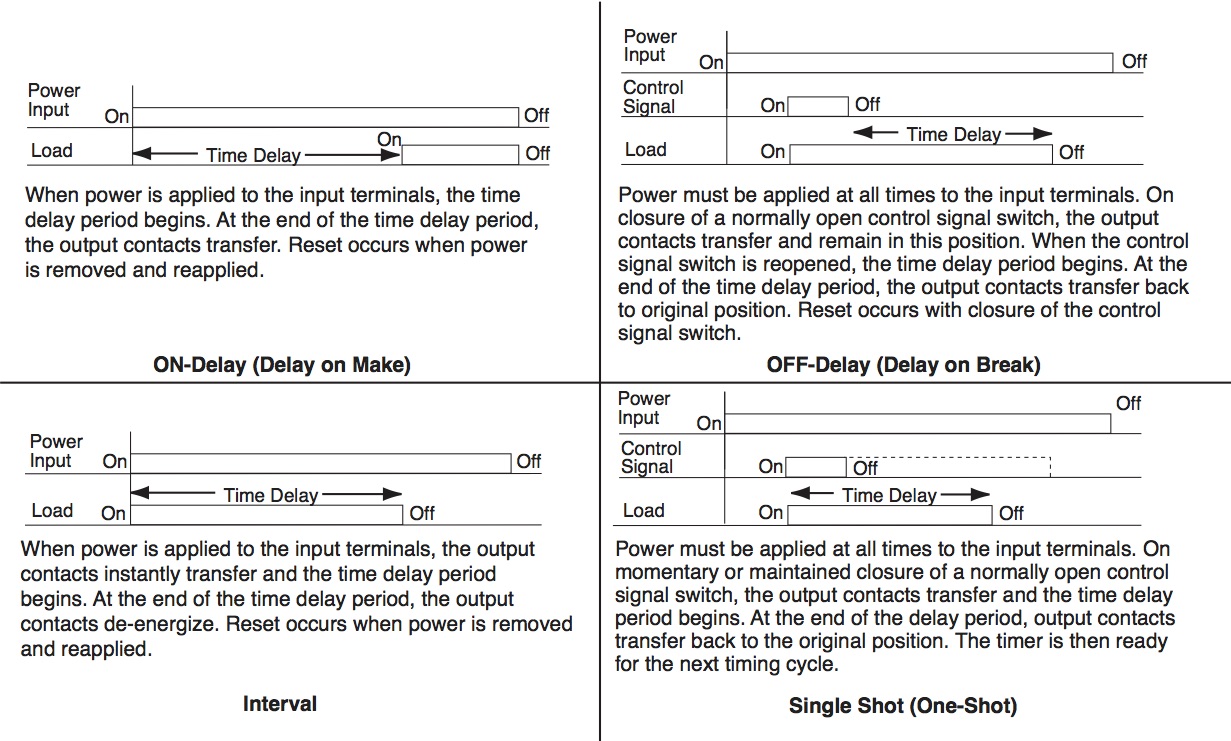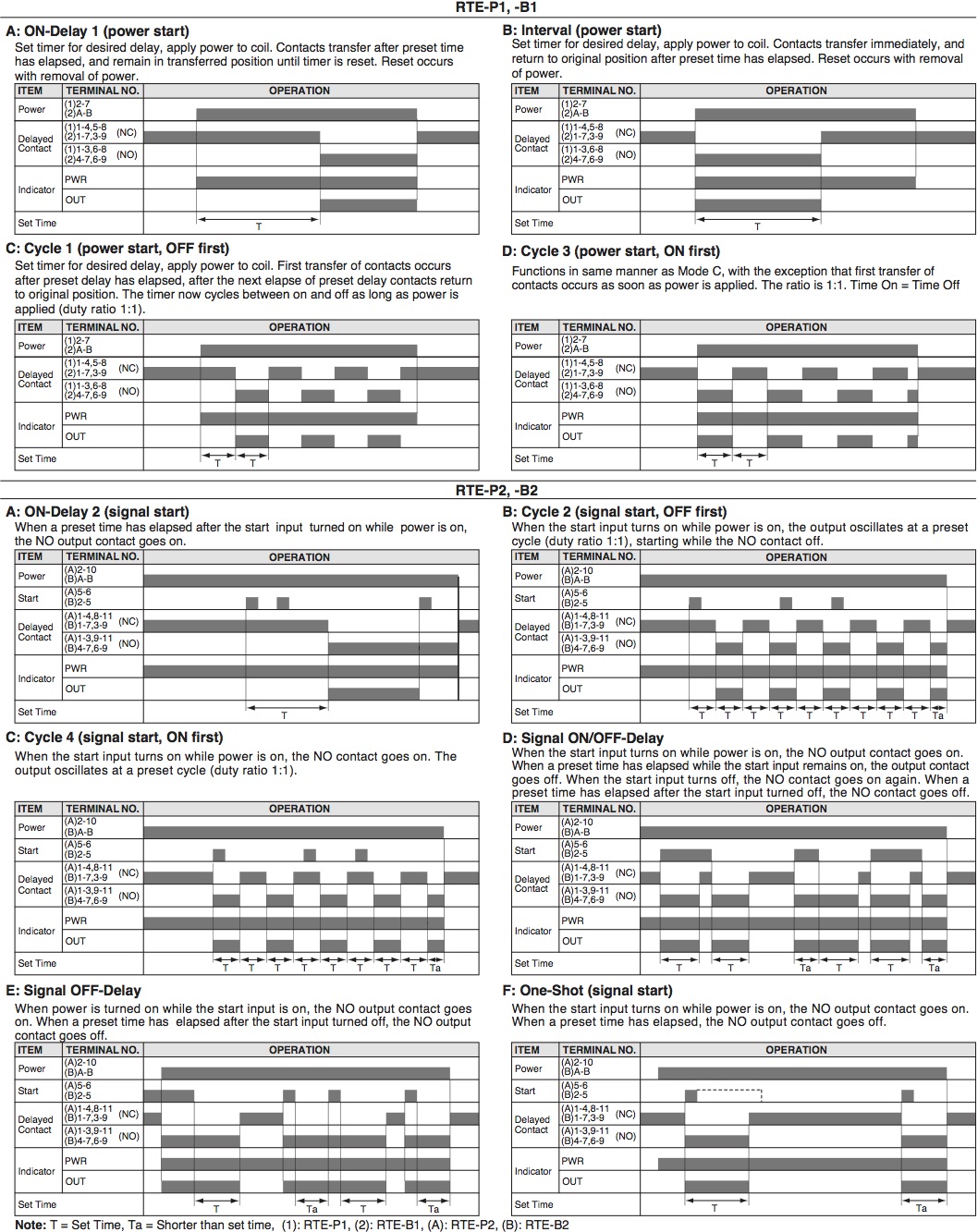Tech Talk: Timing relays are confusing to me. Can you explain the difference between single-shot and interval timers? What happens if the output driving the relay changes state during a timing sequence?
When all of the possible combinations of timing states and initiating device transitions are considered, a stronger word than “confusing” may be in order! Below are some timing diagrams and sequences of operation in simple terms that may be of help. Since it is an electronic circuit that is energized rather than a coil, the initiating device is most often referred to as the control input.
Interval Timer: When the control input is energized, the relay contacts immediately transfer. They will transfer back to their normal position at the end of the timing period. The control input must de-energize to reset the timer. If the control input is de-energized during the timing cycle, the relay contacts transfer back to their normal position immediately and the timer is reset. Note that this is not the case with a single-shot timer.
Single-Shot Timer: When the control input is energized, the relay contacts immediately transfer. They will transfer back to their normal position at the end of the timing period whether the control input is de-energized in the meantime or not. The control input must de-energize and the timing period must finish resetting the timer. The only real difference between these two devices is the ability to reset the timer and transfer the contacts to their normal position during the timing period. With an interval timer, it is possible, but with a single-shot timer, the contacts will always stay transferred for the full-time period. Obviously, the single-shot device requires continuous power. The RTE Series from Kele is available for either of these functions, plus delay-on-break and delay-on-make for your timing convenience!
Additional details on the RTE Series:




